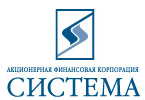|
|
|
 |
Virtual Tours round the Russian Museum The Rossi Wing |
     |
The Russian Museum
»
The Rossi Wing
»
Room 2
Room 2Embroidery and Bone Carvings of the 18th Century Room II brings together works of eighteenth century embroidery and bone carvings. These exhibits reflect the influence of the Baroque and Rococo styles dominating Russian architecture and applied art at that time. Their artistic features were not copied, but reinterpreted by the folk masters. The influence of these two styles can be seen in the complicated forms, dynamic ornamentation, motifs of shells and volutes, images of men and women in European dress, abundance of symbols and allegories. The works of the bone carvers from Kholmogory are typical of this period. The villages on the island of Kurostrov near Kholmogory in Archangelsk Province were famous for this handicraft ever since the sixteenth century. Reproducing the forms of eighteenth-century furniture in miniature, combs, trunks, caskets, bureaux and secrétaires are decorated with plates made from walrus or mammoth tusk and bobbins created from the hair of farmyard animals. The Kholmogory masters had a brilliant command of the art of lace and relief fretwork and engraving. The “Nenets stand” occupies a special place in the art of Kholmogory. Only a very small number of these table decorations now survive. Embroidery is represented by curtains and the snow white fringes of sheets from northern Russia. All eighteenth-century embroideries end in handsome festoons of wattle lacework, which gradually became an increasingly popular form of folk art. The most precious part of any folk costume was the headwear, particularly wedding adornments. Unmarried women wore headgear resembling crowns or bindings. Married women always covered the backs of their heads. Female headwear was decorated with river pearls, mother-of-pearl, beads or gold and silver embroidery, supplemented by precious stone or coloured glass insets. Head attire was carefully treasured and handed down from generation to generation; thanks to that some pieces from the eighteenth century were preserved. Each locality has its own traditional forms, devices and ways of decorating headwear. In Nizhny Novgorod Province, girls wore handsome bindings, while women wore large, crescent-shaped kokoshniks. In Kostroma, the kokoshnik was arched in form. In Moscow and Vladimir Provinces, kokoshniks were embroidered with gold thread on scarlet velvet. |
The Project “The Russian Museum: the Virtual Branch” |